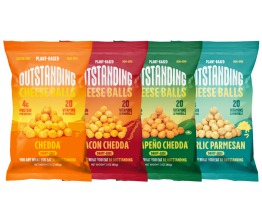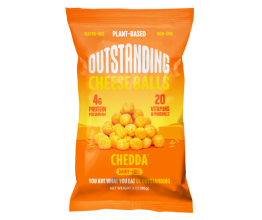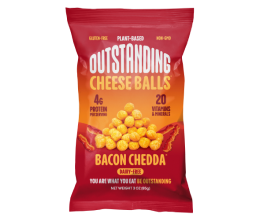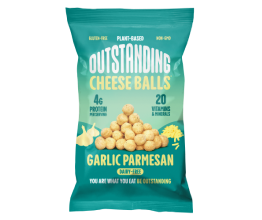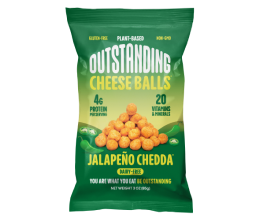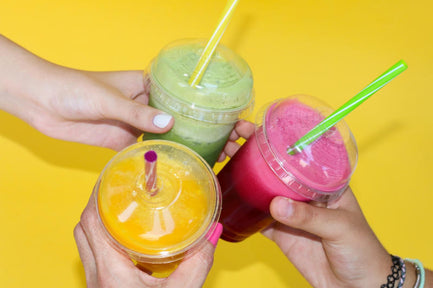5 Best Meal Replacement Food Ideas
What do you think when you hear the term meal replacement? If you’re like most people, you probably get a bit worried and start wondering who took your food. Maybe you start thinking about super-restrictive weight loss diets or bodybuilders prepping for a workout.
The name itself begs a valid question – why would you want to replace your meals, and what replaces them?
In reality, meal replacement solutions are actually quite normal and helpful for everyday folks, as long as you know how to choose the right ones and use them properly. They offer tons of benefits and can fast-track your health and fitness goals, provided you follow a strategy and don’t stray from the game plan. Plus, they can save you time, money, and effort.
But before you jump into a meal replacement routine, there are some things you should know. You need to learn what foods are best for your goals, how often you can eat them, and commit to a strategy that you can maintain without feeling deprived. Taste matters, too, or you won’t stick with it!
Let’s talk about what makes the perfect meal replacement protocol, then let’s get into some of the foods and strategies you should consider if it’s time to make a healthy change.
Meal Replacement Criteria
The definition of meal replacement depends on who you ask, and where you are in the world.
Generally speaking, a meal replacement is any type of food intended as a substitute for the solid meals we typically eat several times a day.
Again, it can mean different things to different people. Some find that meal replacements help them to lose weight by limiting portion size and increasing nutrient density, while others use them to maintain healthy body mass following an injury or surgery as part of rehab and recovery.
Regulations come into play when we look at certain regions of the world and the way in which products are marketed to the population. In Europe, for example, meal replacements must provide between 200 and 400 calories, with a maximum fat content of 30%.
In addition, these products must contain a specified amount of vitamins and minerals, meant to ensure that consumers do not experience nutritional deficiencies. Labels also need to indicate that more than three weeks of continuous use is inadvisable without medical supervision.
Canada has a similar food inspection protocol that sets requirements for meal replacement products and the claims that companies can make on their packaging. Things are a bit less strict in the United States, however, where the FDA does not define any rules for what constitutes a meal replacement product.
The takeaway here is that whatever meal replacement option you choose, you need to proceed with caution and jump to any conclusions without first doing your research. Like any type of diet or physical exercise regimen, it’s best to get the opinion of a medical professional, especially if you plan to make a drastic change to your lifestyle.
On the other hand, feel free to use meal replacements less frequently just as a matter of convenience, which is what many Americans choose to do. We live busy lives with packed schedules, and meal replacements can be an easy way to get healthy nutrition on the go without stopping at the fast-food drive-through or relying on greasy gas station snacks.
Ultimately, it comes down to your own personal health goals, what fits with your schedule, and your ability to use your best judgment regarding what to eat.
With that said, let’s look at some of the best meal replacement foods we’ve found.
1. Store-Bought Shakes and Drinks
This is probably the first thing that comes to mind when you think about meal replacement – single-serving meal replacement shakes and drinks you buy at the store or order online.
These are the meal replacement products you’ve seen marketed for many generations, with companies making big claims about revitalized health, weight loss, and complete nutrition profiles.
As your intuition might reveal, many of these products need to be taken with a grain of salt, and it’s important to run a case-by-case inspection of each one before you make any commitments.
Rather than blindly trusting the bold lingo from the ads and the front of the label, learn to evaluate nutrition panels to get the real story. That’s true with any type of food you buy!
If you want to stock up on some pre-packaged shakes, be sure that they contain less than 250 calories per serving, with at least 12 grams of protein and around 5 grams of healthy fat.
Some carbs are okay as well, provided there are a few grams of fiber to balance them out. Also, look for around a third of your daily value for all key vitamins and minerals.
The big red flag to watch out for here is added sugar and artificial sweeteners. Any more than 10 grams of pure sugar means you should probably avoid that shake – unless you’re planning for a triathlon. Keep things clean and lean with plenty of quality nutrients to stay on course.
2. Homemade Smoothies
A far better option is a meal replacement smoothie you make at home with whole food ingredients and plenty of healthy extras. They only take a few minutes to blend, offer a higher degree of nutrition, save you money, and taste way better than anything you find in the store.
Start with leafy veggies like spinach or kale for antioxidants, throw in a sweet fruit like banana, oranges, pineapple, or mango, add some berries like blueberries and strawberries, scoop a bit of protein powder, then fill up the rest of the container with water, coconut milk, soy milk, or 1 cup almond milk. Superfoods like chia seeds, flax seeds and hemp hearts make for great extras before you blend it all up.
There are tons of meal replacement smoothie recipes you can try, like adding 3 tsp honey for sweetness, adding banana for potassium and antioxidant boosts, or making vitamin C-filled green smoothies with added pea protein or whey protein. For people who love chocolate, cocoa powder is a great option, which pairs nicely with nut butters like almond butter or peanut butter for another helping of protein (and a creamy texture). Greek yogurt, avocado, and vanilla are some other popular ingredients for the smoothie of your dreams.
The downside here is that you can’t take your blender everywhere you go, but given how quickly you can mix and drink a smoothie, it’s an overall time saver that deserves a look. Once again, stick to the proper macronutrient ratios to make sure you don’t go overboard.
3. Bake-your-Own Energy Bars
There are countless pre-packaged energy bars available in stores, but the same principles we talked about regarding shakes and drinks still apply. Be sure to read those labels with care and watch out for hidden sugars and additives. They’re more common than you think.
That’s why we suggest baking a big batch of homemade bars or bites so they’re ready for quick snacking throughout the week. When you make your bars at home, you have precise control over what goes into each batch, from nutrients to flavor and even level of chew.
You can use quality ingredients like cacao powder, coconut oil, chia seeds, dates, and organic peanut butter to get a huge blast of sustained energy, with no worries about unwanted extras. If you need a few more carbs and fats, just add oats or walnuts to bulk them up.
Once you master a few reliable recipes and get in the flow of baking, you won’t want to go back to the store-bought bars that taste iffy and never seem to satisfy your hunger.
4. Soups and Bone Broths
There’s some debate around whether soups and broths are truly meal replacements, or just a way to detox or lose weight. No matter how you categorize them, they can be very useful to clean your body from within and give your digestive system a break.
While you might not be able to drink soup or broth for every meal of the day, there are typically diet plans available that map out other foods you can eat along the way. Many people have had success just by switching out one meal a day for soup as a way to curb cravings and keep energy levels up.
If you’re new to the idea of meal replacement and want to try something new, it’s not a bad idea to make a big batch of soup to keep in the fridge during your journey.
5. Classic Crunchy (Healthy) Snacks in a Bag
Snacks like cheese puffs and pork rinds are not what we usually think of when considering meal replacement foods. But thanks to the ingenious chefs at Outstanding Foods, we found a way to make these snacks 100% plant-based and right in the sweet spot for meal replacement.
Just look at how much protein we packed into one bag of Pig Out Pigless Pork Rinds – 25 grams – and with way less sodium and fat than traditional rinds. That’s the same amount of protein as a beef burger patty or a medium-sized chicken breast.
Our Outstanding offer a perfect portion of protein, plus 30% daily value of key nutrients like iron, calcium, vitamin B12, and vitamin D.
Did we mention that these meal replacements taste amazing and come in a wide range of classic snack-food flavors? Learn more about our unique approach to plant-based snacks here.
Conclusion
Whether you’re committed to making a major health change or you just want a reliable, healthy source of quick nutrients during your day, these are all great options to add to your repertoire.
Sources:
35 Easy Food Substitutes to Make Every Meal Healthier | Eat This Not That
Meal Replacements: Choose Those Bars and Drinks Carefully | WebMD
10 Healthy Homemade Protein Bars That Are Really Delicious | Nutritious Life
